Heavy Duty Workbench: Plans to Build Your Own
Looking for a sturdy workbench that is super strong, can support a bunch a weight, and still looks good? Then you'll love this heavy duty workbench that one of our customers, Cliff, built for the garage in his home. Cliff was looking for something that was sturdy and found Simplified Building after some searching on the internet. With the help of our projects team, Cliff was able to come up with a design that suited his needs. He built the workbench frame using Kee Klamp fittings and pipe then attached a custom made table top to the frame. In this post, we'll cover Cliff's workbench and show you how you can create your own:
Project Details
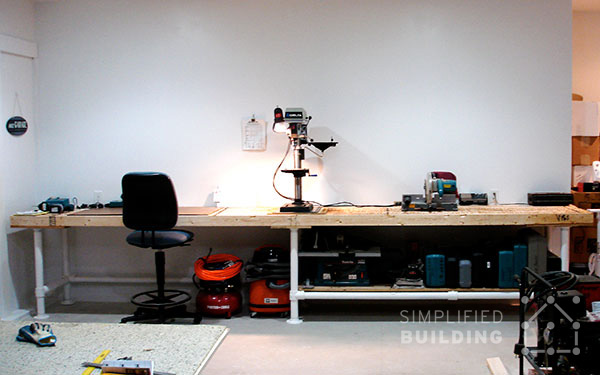
The workbench table top was built using nineteen 16 ft. long construction grade 2x4s which were glued together to create the top. Cliff first made sure that none of the 2x4s were twisted, or warped, and then glued them together using nearly 7 quarts of Titebond III Wood Glue.
Cliff needed to work fast, in order to completely cover all nineteen 2x4s, before the glue completely dried. "It was a very serious race against the clock", said Cliff.
In order to do this, he cut the spouts off the bottles of glue, to allow him to pour faster. He then used seven bar clamps, four on the bottom and three on top, to attach the 2x4s together.
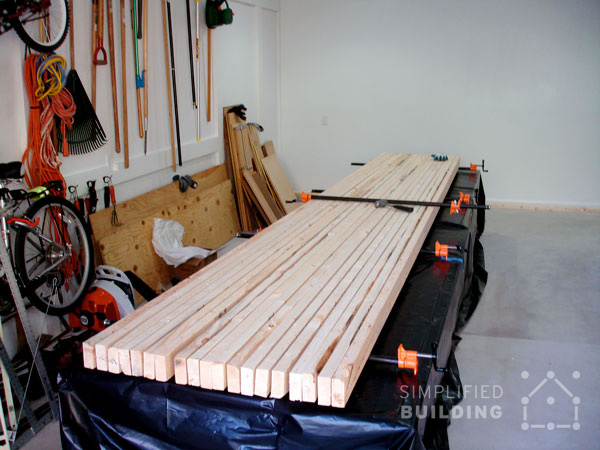
While the 2x4s were drying, Cliff painted the workbench pipe frame. He first sprayed all the frame components down with a de-greaser. He then followed this up spraying everything with Windex and wiping the frame clean and dry. From there, Cliff applied a few coats of primer and painted the frame with three coats of a high gloss white Krylon spray paint.
Once the workbench table top was done drying, Cliff attached three 30x30 in. pieces of plywood to the bottom of the workbench table top. These would sit over each pair of Flange fittings used to connect the top to the pipe frame. The image below shows how this was done.
The image below is an interactive image. Click on the "+" bubbles to see which fittings were used at that spot.
With the workbench table top complete, Cliff attached heavy steel handles to the side of the top so that it could be lifted more easily. Then with the help of three other guys, they were able to lift the top and place it onto the workbench frame. At that point, the steel handles were removed. Cliff estimates the top to be about 380 pounds.
From there, he was able to secure the workbench table top to the frame by screwing the Flange fittings down. Each Flange fitting has four holes in it for mounting.
The workbench is 36.5 in. high, 16 ft. long, and 30 in. wide. The frame itself is about 13.5 ft. long and utilizes size 9 (2 in. OD) fittings and pipe.
Cliff also decided to add a shelf to the bottom the workbench frame. The shelf is 6.5 in. from the top of the Flange fittings at the base of the frame.
"I cut wood spacers from furring strip at 6.5 inches lengths. I taped each 6.5 inch spacer to each vertical pipe at its base, sitting on the to edge of each floor, pipe flange, not the flat part of the flange, but the vertical internally threaded collar of the flange. Believe it or not I put a lot of thought into the 6.5 inch length. I am very happy as I can get my vacuum all the way under the table."
The shelf rests on the pipe supports and is secured using semi-circle pipe clamps:
"The bottom is laying on the support pipes (actually the high spots in the pipe joints). Semi-circle pipe clamps are screwed from the bottom. They don't add any strength, they just keep the plywood from migrating. Had I known more about your products I would have made it more sophisticate and still may."
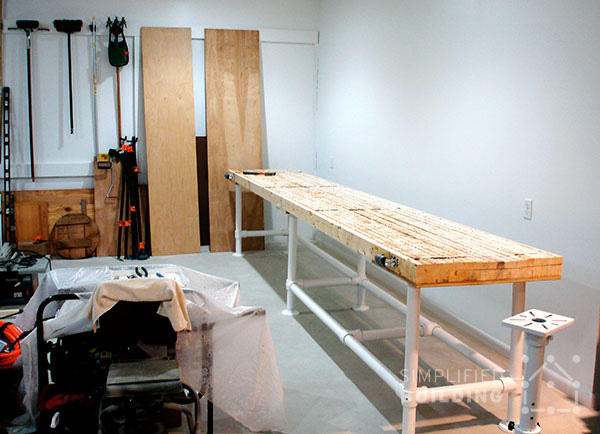
One final thing to note about the project, is that Cliff attached custom made plastic plates to the bottom of the Flanges fittings, used for the pipe frame base. This keeps the bench just slightly off the floor and allows Cliff to slide the workbench, with a bit of effort, away from the wall if he needs to.

Cliff enjoyed working with Kee Klamp and is very satisfied with the workbench. He also wanted us to let everyone know that he couldn't have done built the workbench without the help of his wife. So we have her to thank for this amazing project too! Here's what Cliff had to say:
"Bottom line...I enjoyed the project thoroughly. Now I have a bodacious industrial strength bench that anyone would be proud to own. It is 16 feet by 30 inches and could hold an airplane engine. Next Summer I plan to build another one very similar, but to fit a 18 foot wall at 36 inches deep. One last thought ... although I have not tried, I guarantee that bench can hold an automobile engine without a problem."
Parts you'll need
How to Assemble the Workbench
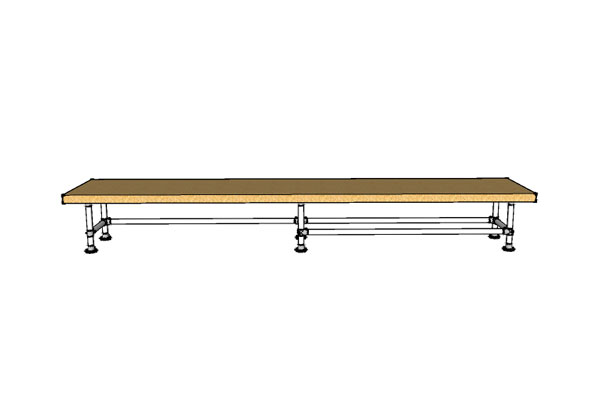
Follow the diagrams and instructions provided below, to build a workbench just like the one Cliff built.
To download these instructions as a PDF, so you can follow along during your building process, fill out the form below and a download link will be sent to your email.
Heavy Duty Workbench Plans PDF

Start by laying the Flange fittings, used for the base of the workbench frame, out on the ground. On Cliff's workbench, there are 6 Flange fittings used.
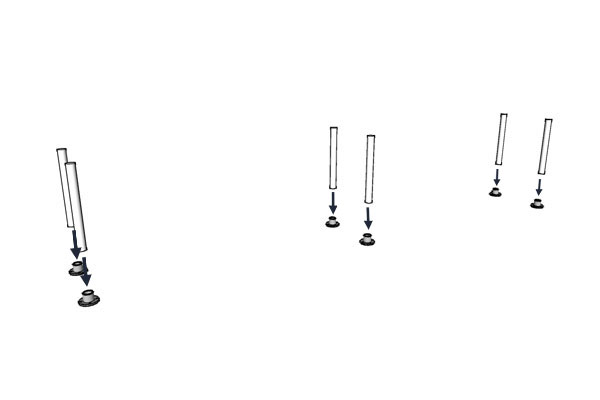
From there, slide the vertical supports, used for the workbench frame, into each of the Flange fittings. Tighten down the set screws to solidify the connection.
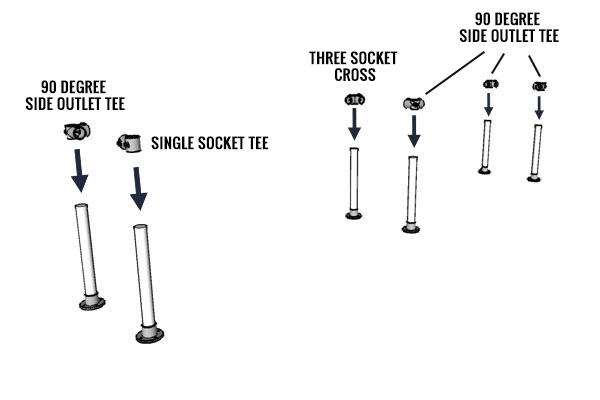
Next, you can slide the fittings, used to connect the horizontal supports, onto these vertical supports. This will include the 1 Single Socket Tee, 1 Three Socket Cross, and 4 90 Degree Side Outlet fittings. The image above better illustrates how to do this.
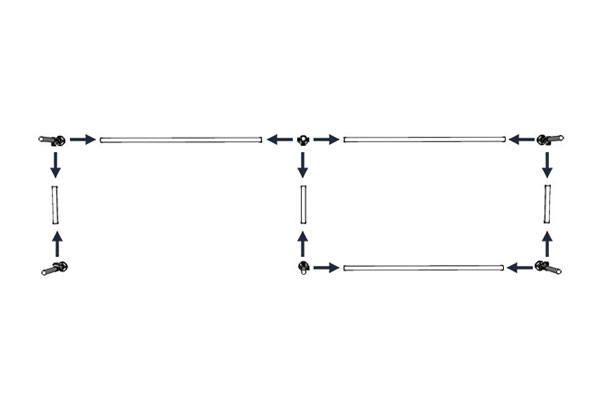
Once the fittings are secured in place, attach the horizontal supports. The exact order in which you do this is not important, just as long as they come together like the image pictured above and below. Secure the pipe supports by tightening down the set screws on each of the fittings.
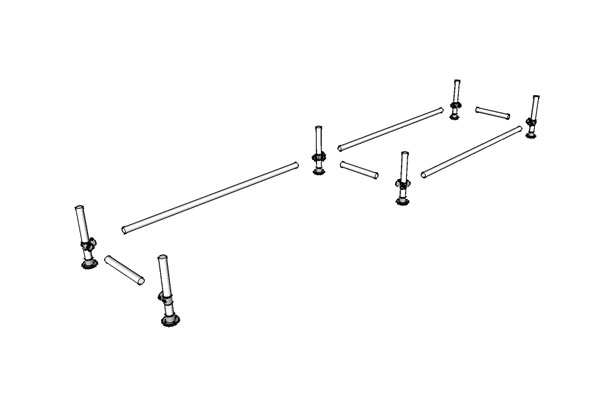
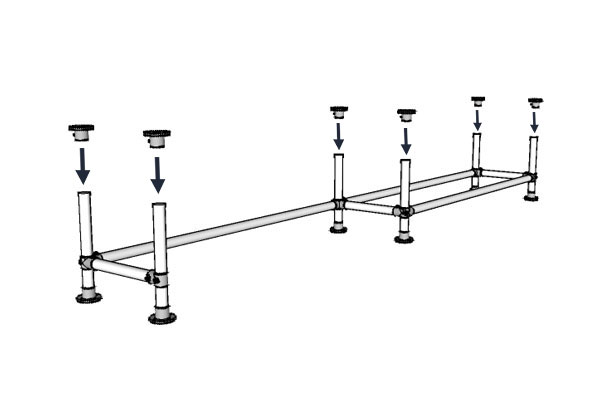
From there, slide the Flange fittings, used to attach the workbench table top, onto the vertical supports. Secure the Flange fittings by tightening down the set screw to each of the fittings.

Finally, you can attach the workbench table top. Place the table top over the the table frame and on top of the Flange fittings. Now, attach the Flange fittings to the table top using the appropriate hardware. There are four holes in each of the Flange fittings for securing the fittings to the table top.
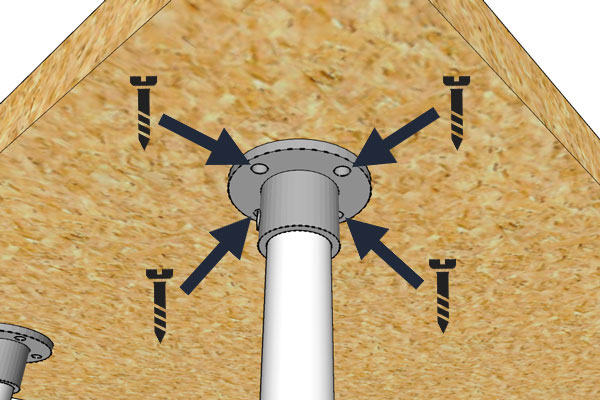
Now, you should have a complete workbench just like the one Cliff built.
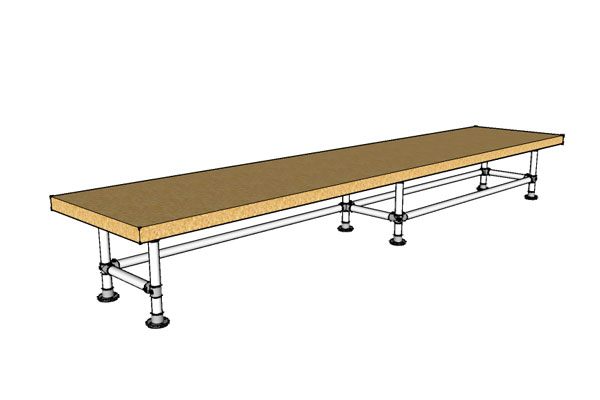
To view or order the fittings used for this project, visit our Kee Klamp fittings inventory. If for any reason you need any help, or would like some assistance with a similar design, feel free to reach out to our projects team for free design assistance. Also, to get updates on more projects like this, be sure to sign up to our newsletter below.









